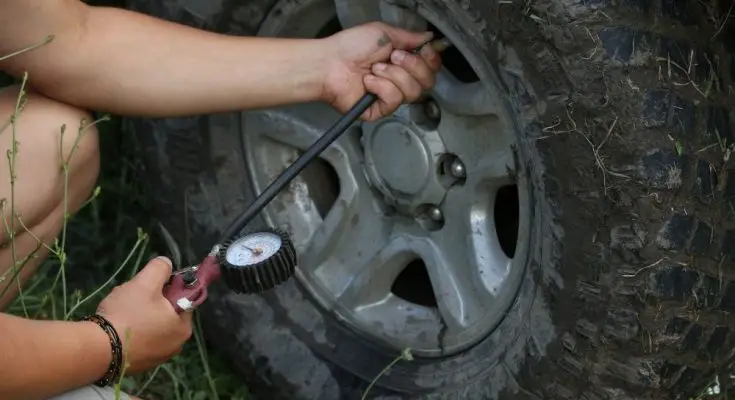As the driver of the family minivan, the act of putting air in the tires isn’t something that requires much thought. Do the tires look a little low? Better put some air in them. Things aren’t much more complicated than that. Behind the wheel of your Jeep Wrangler, though, keeping your tires inflated is practically a science. Requirements for tire pressure change with the terrain, and the variations in pressure from temperature and general driving can loom large. Because this is so critical to making the most of your new Jeep, whether you’re on the road or off it, you should read on to discover what to know about Jeeps and tire pressure.
Air Down for Off-Roading
Novices are likely to believe that when the roads get rough, tires should get tough too. As a result, they may inflate them to high pressures for maximum strength. This is not what you should do, however. If this is how you were to prepare for an off-road adventure, you’d be moving in a bad direction. Turn your thinking around and let the air out of the tires before off-roading. Reducing tire pressure increases your tires’ surface areas. With more surface area comes more gripping ability on those muddy trails and rocky paths. You should reduce the air to 15 to 20 psi on your tires. This is significantly lower than the standard 36 to 38 psi on the pavement. As you head back from your trip, you may want to reinflate.
Keep Tire Pressures Equal—or Else
How does the phrase “death wobble” make you feel? If pressure levels are inconsistent among your four tires, your ride could be much more than merely wobbly. This unevenness can place great strain on your Jeep’s front axle, which will lead to violent shaking in your steering wheel and other steering components. The Jeep community calls this unfortunate phenomenon “the death wobble.” Maintaining proper tire pressure is an effective way to protect against this occurrence.
More Air Doesn’t Mean More Pressure
Part of what to know about Jeeps and tire pressure is that almost every part of a Jeep Wrangler is a work in progress. One of the most common modifications Jeep owners make to their Wranglers is swapping out the stock tires for bigger aftermarket alternatives. While a larger tire requires more air, that doesn’t mean it also needs more air pressure. Read the sidewalls of your new tires and take the recommended psi as a guideline for on-road driving. Don’t exceed that number. If anything, err on the side of lower pressure. Continue to air down if you’re concerned with how your tires wear and how your Jeep feels from behind the wheel.
Additional Resources:
Scooters
Tesla



